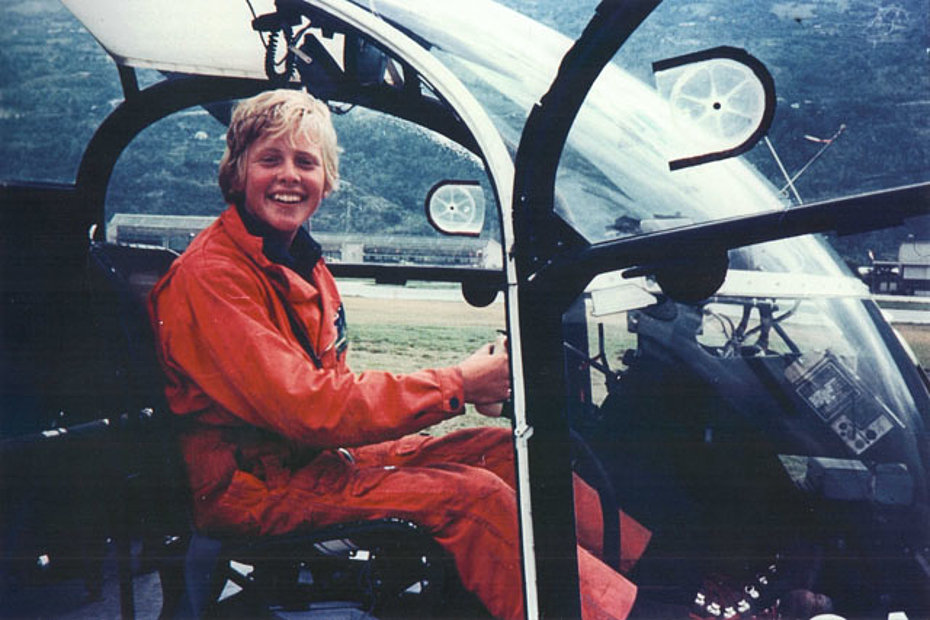
Bagnoud François-Xavier
On January 14, 1986, during the eighth edition of the famous Paris-Dakar motor rally, a very serious accident occurred that cost the lives of five people. Among them was the young helicopter pilot François-Xavier Bagnoud, just 24 years old. Here is a summary of his story.
Son of Bruno Bagnoud, historical founder of the company Air Glaciers, and countess Albina du Boisrouvray, François-Xavier was born in Geneva on September 11, 1961.
His parents met in Crans where Albina's father had a chalet. The beautiful foreigner and the sportsman from the Valais like in a novel met then fell in love and got married. After their marriage they went to live on the campus of the University of Sports in Magglingen where Bruno Bagnoud was completing his professional training as a sports instructor.
Albina's father (a former RAF pilot during the Second World War), since Bruno Bagnoud had already contracted the aviation virus (a passion that his young wife shared with him), for their wedding gave them a Piper Super Cub. It was in this aircraft that François-Xavier during his childhood made his first flights.
François-Xavier's childhood was very special because his mother was the only daughter of Count Guy de Jacquelot de Boisrouvray, first cousin of Prince Rainier III of Monaco and Luz Mila Patiño Rodríguez. Her family had made a huge fortune in Bolivia mainly by carrying out activities in the mining field. François-Xavier’s great-grandfather Simón Iturri Patiño was nicknamed the Rockefeller of the Andes and was for a time one of the richest men in the world.
After his parents moved from Magglingen to Echandens, near Lausanne, the little François-Xavier watched occasionally his father landing in a meadow not far from home. For a child to see one's own dad descend from the sky in such an original way was certainly an indescribable feeling.
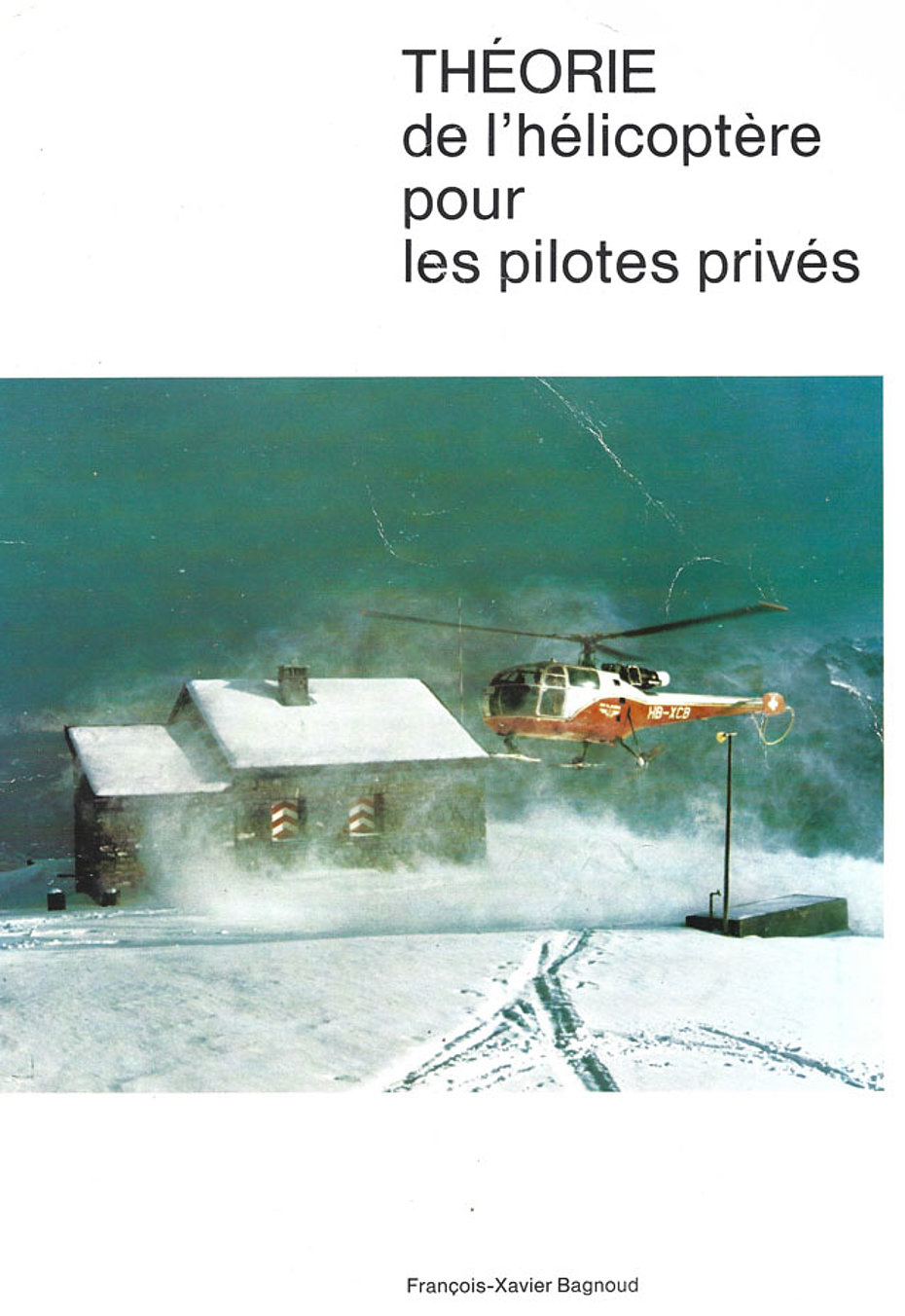
During the winter period his parents moved to Crans, where François-Xavier had the opportunity to made his first helicopter flights together with Hermann Geiger, the famous glaciers pilot.
Albina remembers that as a child nothing attracted François-Xavier’s attention more than toy helicopters.
After the separation of his parents, his father continued to manage Air Glaciers while his mother moved with François-Xavier to Paris where he obtained his baccalaureate and his diploma attending the American School.
During the school vacations, mother and son often went to Valais so that he could stay with his father. Attracted by aviation, he spent endless days at the airport in close contact with the Air Glaciers personnel and aircraft.
Part of his time was spent with the royal family of Prince Rainier III of Monaco, together with his cousins Caroline, Albert and Stéphanie.
As a teenager, François-Xavier came into close contact with the world of cinema after his mother, already a freelance journalist, became a film producer. Between 1969 and 1986, through his production company (Albina Productions) she produced 25 films with actors of the caliber of Gérard Depardieu, Philippe Noiret, Catherine Deneuve, Romy Schneider, and Sophie Marceau to name a few.
At the end of his secondary education, François-Xavier obtained his airplane pilot's license and then in 1979, he entered the School of Aerospace Engineering at the University of Michigan, Ann Arbor, USA, where he obtained his engineering degree three years later.
Honorary member of an engineering society, he also founded the student chapter of the American Helicopter Society at his university.
In 1981, during his studies in Ann Arbor, François-Xavier wrote a textbook entitled “Helicopter Theory for Private Pilots”, which became a reference book that was very much appreciated by student pilots.
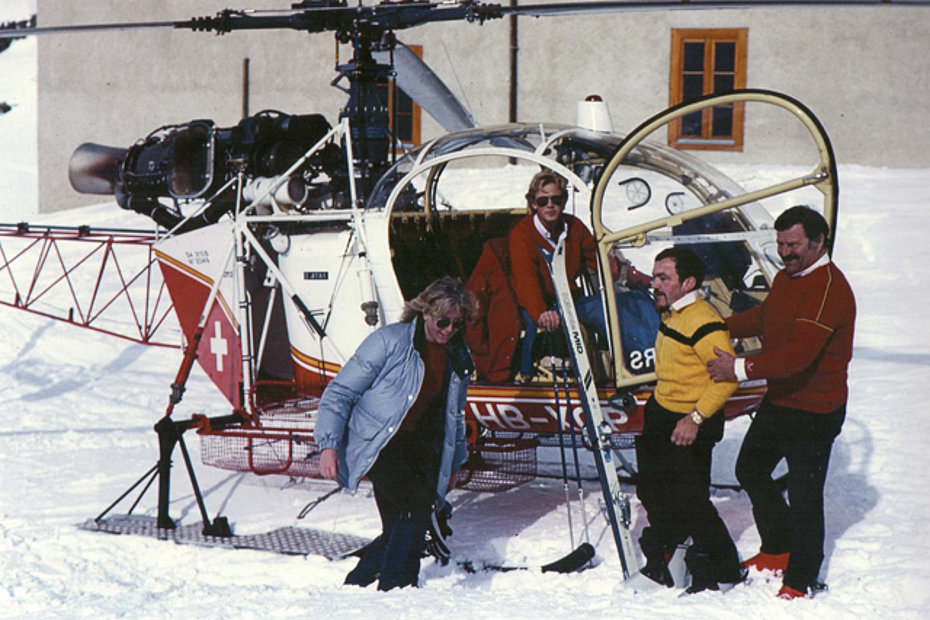
While in the United States he had the opportunity to fly airplanes and helicopters.
After graduation, François-Xavier’s passion for flying was such that led him to join his father is Air Glaciers.
At the age of 23 he became the youngest professional IFR (Instrument Flight Related) pilot for both airplanes and helicopters.
Jean-Jéròme Pouget, the historic Air Glaciers pilot, trained him to fly helicopters. As he recalls in the book "Mémoirs d'Air Glaciers - Les incroyables histoires d'une enterprise née pour sauver" FX was his first student pilot. Describing him, he affirms that “he was a very gifted and intelligent boy, but at the same time of great simplicity and incredible kindness. He was selfless and hardworking, and he would have been successful in any professional field. I believe that air rescue was his true reason for living. I have a bright memory of this guy”.
Air Glaciers Pilot
He joined the Air Glaciers team and during 1985 was in charge of, among other things, the organization of the company's computer service. He should have, according to plans, taken the reins of the company that day that his dad decided to delegate a part of his responsibilities.
About the job of helicopter pilot he stated in an interview that "Flying is really fantastic, flying for me means adventure, freedom. The conquest of the air is something absolutely fascinating. Being a pilot is an exciting job. In addition to the pleasure of flying you make yourself useful, and then you immediately see the result of the work, whether it is the refueling of a hut, the transport of concrete or rescues. The job of an airline pilot would not be as satisfying to me".
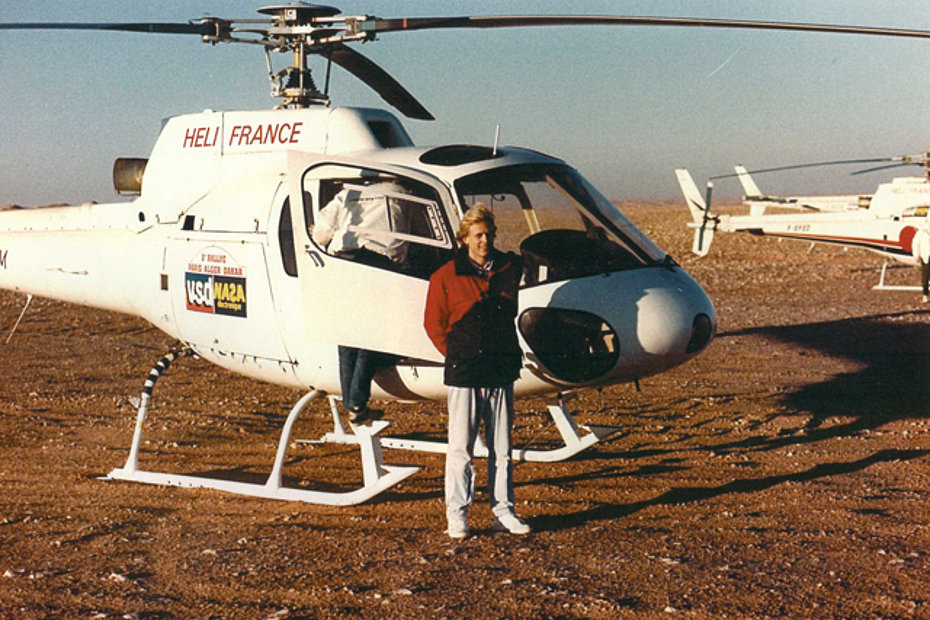
At the time, the young man was also trying to help manage a chain of hotels (two in Geneva and one in Basel) owned by his mother. Planning, organizing and managing were tasks he was passionate about and for which he had prepared himself well in the United States by taking a Master of Business Administration course.
He called himself a loner but not an individualist. For him, being a loner meant setting out to find himself. "Personally, I know where I'm going. I've always known what I wanted to do and when I wanted to do it. The important thing in life is to set milestones, goals and objectives to achieve. When everything is planned then you can leave and start dreaming, and when you dream you have to dream big".
Continuing to fly was an absolute need for him. He would later want to launch himself into the business world in different sectors.
François-Xavier nicknamed "the little prince of the mountains" was well liked by everyone, and moved with natural ease in all circumstances, whether he was in exclusive environments or in the mountains in contact with the shepherds of the flocks. He had a natural predisposition to stay in contact with people, and a great kindness.
He was aware of the fact that he was privileged, but in Valais, in the mountains, he felt very comfortable because, as he said, the environment was healthy, genuine even if sometimes hard. In Valais he met the smile of people who were happy even with little.
As a pilot of Air Glaciers he had the opportunity to fly the following helicopters: SE 313B Alouette 2, SA 315B Lama, SE 3160 Alouette 3 and Agusta A109A. To these helicopters was later added the AS 350B Ecureuil.
In 1985 the young pilot passed the exam to obtain the license of aspiring instructor.
The Paris-Dakar and the mysterious accident
Interviewed in April 1985 by the journalist Hervé Valette about the Paris-Dakar, he affirmed that "It is a fantastic experience! It is a new adventure but also the occasion to make new, exciting encounters, experiences and beautiful sensations. The Paris-Dakar is not told, it is lived".
That year he had the opportunity to fly an aeroplane that provided logistics for his cousin Prince Albert of Monaco, who took part in the race.
François-Xavier Bagnoud was certainly born under a lucky star, but unfortunately good luck deserted him on the evening of January 14, 1986.
On the occasion of the eighth edition of the famous Paris-Dalar rally, the young pilot was hired to fly the AS 350B Ecureuil F-GEAM helicopter used by the organizers for liaison flights, television filming, rescue and transport of material.
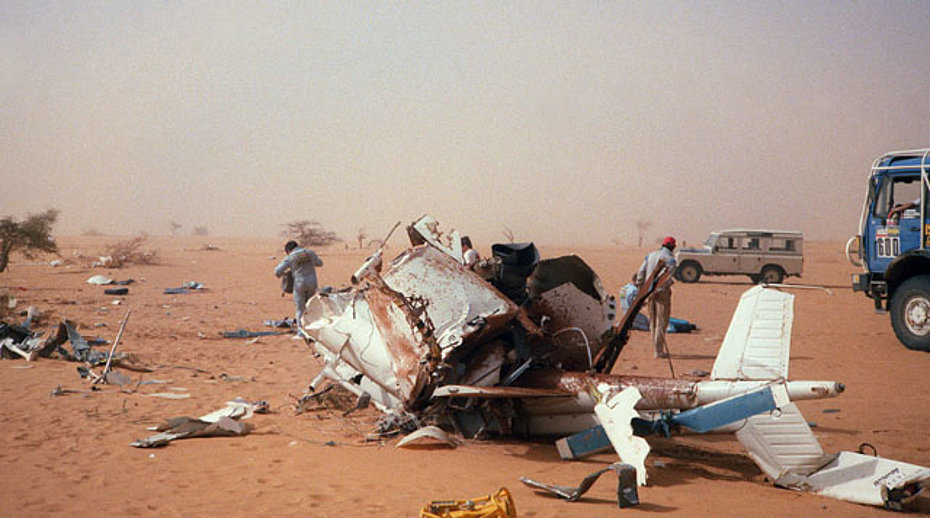
That day François-Xavier Bagnoud made some flights with the helicopter. At 17.00 the sun was slowly setting and the weather conditions were progressively getting worse, with the wind increasing again after having calmed down during the afternoon.
At 5.15 pm, the helicopter on which were Thierry Sabine, the creator of the race, the famous French singer Daniel Balavoine, the journalist Nathaly Odent and Jean-Paul Le Fur, a radio technician, took off from Gao and followed the Niger River to reach the bivouac of Gourma-Rharous (Mali), the arrival of the eighth stage.
At about 6.10 pm, one hour and a half later than planned, the aircraft made an intermediate landing in Gossi. This was where the second timed stage of the day was scheduled to start. Thierry Sabine took the opportunity to chat with some competitors. They still had a hundred kilometers to go. The sandy wind and darkness had advanced, and the weather was starting to tighten.
Despite the difficult conditions the helicopter, which was not equipped to fly at night, took off from Gossi again to reach the final destination of Gourma-Rharous.
Twenty-one kilometers before the destination of Gourma-Rharous, the pilot decided to land probably forced by the difficult weather conditions. It was 7.00 pm when Thierry Sabine got out of the helicopter and stood in the middle of the track and with wide gestures of his arms stopped the Lada Niva car with the number 198 that was coming at high speed driven by Pierre Lartigue and co-pilot Bernard Giroux. With a calm and reassuring tone, Thierry Sabine told them to report their position to the camp and to inform the organizers so that they could send a car to take them to Gourma-Rharous.
In fact, upon arrival, Lartigue and Giroux immediately asked Bernard Didelot, president of Africatours, that Thierry Sabine was waiting for them.
The helicopter takes off again
The visibility conditions were, as mentioned, far from ideal and in the meantime it had become dark. In an interview Raoul Raymondis, a French rally driver who was driving on that stretch of track, stated that visibility was reduced to 50-60 meters due to dust and sand raised by the wind.
For inexplicable reasons François-Xavier Bagnoud started the helicopter and when he saw the car of Charles Belvèze and Jacky Giraud coming, he took off and started to follow it. From time to time the crew saw the helicopter's searchlight pointing at the area around the car.
It is likely that the pilot was using the car's headlights as a visual reference given the difficult visibility conditions.
Belvèze and Giraud observed the helicopter circling behind them at very low altitude for several kilometers.
Suddenly the helicopter, which was flying very fast, overtook them on the right and tilted 45 degrees and it was then that they heard a noise that they described as a "voooufff". There was neither an explosion nor flames.
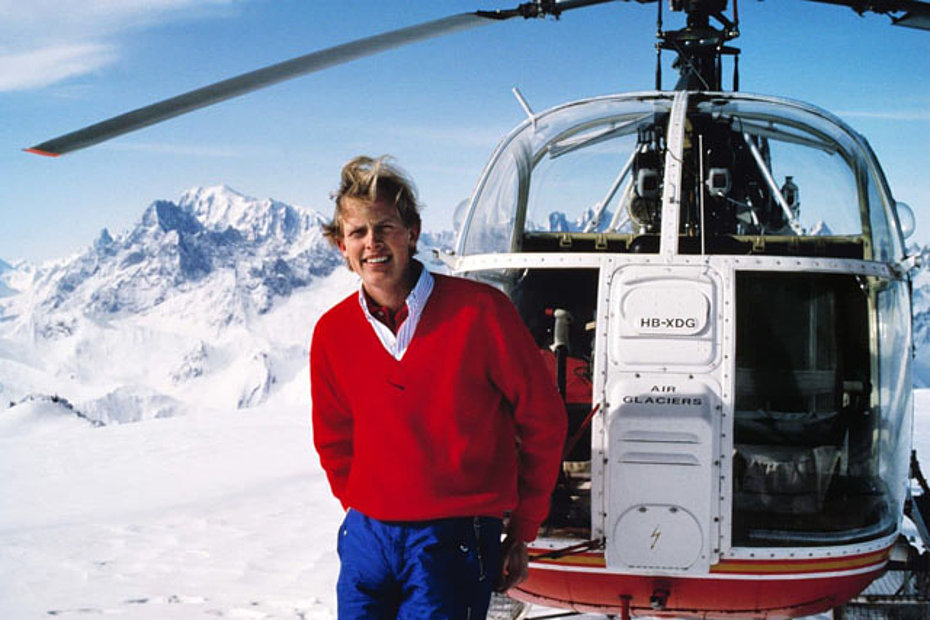
Realizing that the helicopter had impacted the ground about 30 meters to the right of the runway leading from Gossi to Gourma-Rharous, Belvèze and Giraud stopped and turned back. By the light of the headlights they saw the wreckage of the helicopter scattered everywhere. Realizing what had happened and fearing an explosion (there was a strong smell of kerosene in the air) the crew reached their destination at Gourma-Rharous which was just 11 km away to inform the organizers of what had happened. On the way they also met the car driven by Bernard Didelot which was supposed to pick up the occupants of the helicopter. In Gourma-Rharous however nobody initially believed Belvèze and Giraud who seemed shaken.
Radio technician Gerard Jouany and journalist Dominique Fillon, accompanied by Jacky Giraud, went back after hearing the terrible news to see for themselves what had happened. In the light of the headlights they found the site of the accident. They were soon joined by Bernard Didelot, who initially had not found the exact spot.
It was immediately clear that all the helicopter occupants were dead, even if there was uncertainty about their identity. The group returned to Gourma-Rharous to confirm what had happened.
Among the rally participants who first learned of the incident was Prince Albert of Monaco, who was as already said cousin of François-Xavier Bagnoud. For him and for all participants it was a real shock.
The accident area was secured and the bodies were covered before being recovered by the medical team and taken first to Gourma-Rharous and then to Bamako before being repatriated. Patrick Vertois associate of Thierry Sabine informed Bruno Bagnoud of the loss of his son. It was his turn to announce the misfortune to Albina.
With the light of dawn the scene of the accident appeared in all its drama. The wreckage of the helicopter was scattered over a distance of more than 150 meters. From the traces on the ground it was clear that after hitting the ground the helicopter flipped forward several times and was completely destroyed.
Causes never clarified
The accident raised a lot of commotion and was the object of great attention by the media as Sabine and Balavoine were very famous people in France.
A few days after the tragedy, Bruno Bagnoud went to the accident site to try to understand what had happened. Based on his son's logbook, he claimed that Thierry Sabine (who also held a helicopter pilot license) was at the controls of the helicopter that night. This hypothesis was quickly refuted by numerous witnesses stating that Sabine was not able to fly at night. Bruno Bagnoud also wondered about a possible military ambush, given that the helicopter was flying over a conflict zone between Mali and Burkina Faso at the time, and that shots had been fired towards the cars.
Nevertheless, these hypotheses do not seem to be sufficient to confound the official and most accepted version, that of a simple weather-related accident. Perhaps fatigue also played its role, since the race had been going on for two weeks with a very intense rhythm for all participants.
The great mystery remains as to why the pilot still decided to take a chance. Why take the risk only for a few kilometers when a vehicle would soon come to pick them up? In an article about the incident, the following text is reported: "It was known that the pilot, tired of the pace that the Dakar implied, was on a course with Thierry Sabine, the latter little inclined to strictly apply the safety rules, and whose charisma and taste for adventure were sometimes considered overwhelming". For a long time, the only and perhaps the only rational answer that has been advanced is the thesis of a sudden and grave urgency (perhaps a matter of life and death). Was it perhaps a snake bite, scorpion sting, or any other serious incident that motivated an emergency takeoff, despite the obvious danger? Or did the pilot or the organizer, out of fear, not want to abandon the helicopter in the middle of the desert? Was it the psychological pressure that made the young pilot take the decision that cost him the life? The answer will remain a mystery guarded by the desert of Mali, it will be yet another mistery never solved.
On the incident there are of course various other hypotheses, even of a conspiratorial type related to political issues.
A commemorative plaque has been installed at the site of the accident.
The unheeded warning of the parents
Both his father Bruno Bagnoud and his mother did not want their son to participate in the Paris-Dakar rally, but he, now an adult, made his own decision. His father, who flew 250 hours in five months in Mali for the United Nations between October 1967 and March 1968, knew the risks and remembers talking to François-Xavier about it: "Night flying is complicated, dangerous and you need a lot of experience" he told him. Both parents agreed that their son should not fly at night.
His mother affirms that her son was an exceptionally gifted pilot, but like all young people, he had the "eagerness of youth". In the book "Bruno Bagnoud - Parole d'honneur" (words of honor) she states that her son took risks, but that these risks were reasonable, always calculated.
During his short life as a helicopter pilot, during which he would have accumulated about 1'600 hours of flight time, the young man in addition to the general activities of transportation of people and material had carried out more than 300 rescue operations, some of which in the Swiss Alps.
Tragically in the interview he gave in the summer of 1985 he stated that "Life is unpredictable, imponderable, a succession of events and unforeseen events".
After the accident, François-Xavier was buried in the canton of Valais at the cemetery of the little village of Le Châble, below Verbier.
The accident brought back to memory another tragedy which had closely touched Bruno Bagnoud and the Air Glaciers team who on June 6, 1968 had lost in another helicopter accident another young pilot, the 23 years old Jean-Pierre Allet, victim of a fatal imprudence.
In memoriam
The loss of her son was for Albina du Boisrouvray and the entire family a tremendous blow, totally destabilizing.
To pay tribute to the memory of her son, in 1989, with the help of family and friends, she founded both the FXB Foundation and FXB International. To fund these he sold three quarters of his business holdings, as well as paintings, gold and silver objects from the pre-Columbian era and his country house near Paris, raising about $100 million.
With some of this money, various aid and support programs were started, including a home-based palliative care program for the terminally ill in Switzerland and France, a helicopter rescue station in Sion, and a professorship at the University of Michigan where François-Xavier had studied.
FXB International is active worldwide in 5 areas (FXB Villages Economic and Community Development - Education - Nutrition, Health, Water and Sanitation - Protection and Climate Change). The FXB organization develops programs that promote respect for basic human rights and social justice. Its activities strengthen the capacity for action and development of the communities in which FXB intervenes.
From China to South Africa, Mongolia, India or Rwanda, FXB works across the globe to eradicate extreme poverty and promote social justice among the most marginalized populations.
To date, 18 million adults and children have benefited from programs in economic and community development, infrastructure rehabilitation, access to water and sanitation, education, prevention and awareness.
Interesting Links
Visit the FXB organization's link: FXB International | Ending poverty, restoring dignity - FXB | Ending poverty, restoring dignity
Did you know that …
The name François-Xavier Bagnoud was given to an astronomical observatory (Observatoire François-Xavier Bagnoud located above the village of Saint-Luc in Valais), as well as an award that is given every two years for outstanding achievements in the aerospace field.
The aerospace engineering building at the University of Michigan also bears his name.
François-Xavier Bagnoud's name was also given to the mountain hut “Cabane de Panossière - Cabane FXB Panossière”, located at 2,645 meters in the Valais Alps.
HAB 05/2021

